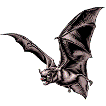Museum, University of Nebraska State

University of Nebraska State Museum: Mammalogy Papers
Document Type
Article
Date of this Version
November 1994
Abstract
Many of us enjoy walking in the woods or prairie and looking for interesting natural items or behavior. My oldest child now takes delight in spotting and finding things before I do. Often we find skulls, teeth, and bones of mammals and, I suspect, many other people do too given the fact that many of these items are brought into the Museum to be identified. With just a little explanation about what mammals eat and the effect of these foods on the shapes of teeth, an observant person can start to categorize several common mammals if they know what to look for. Because dietary habits are reflected in the teeth of mammals, insect-eaters and meat-eaters look different from each other and from other mammals that eat everything. All three of these look different from plant-eaters. These broad categories of feeding are called insectivory, carnivory, omnivory, and herbivory, respectively. The pattern of bumps or ridges and valleys on the tops of the teeth is the cusp pattern, and the hardest working teeth are the premolars and molars, or cheekteeth, that are just behind the front teeth. The cusp pattern on the cheekteeth is how we can tell the kinds of foods a mammal may eat.


Comments
Published in Museum Notes by University of Nebraska State Museum, November 1994, Number 89. Copyright 1994 Patricia Freeman.